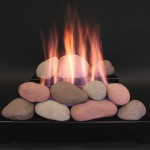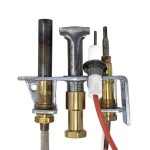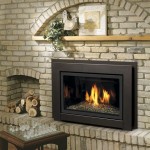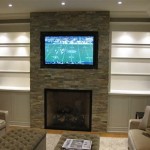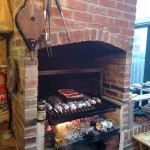Two-Way Ventless Gas Fireplaces: An In-Depth Exploration
Two-way ventless gas fireplaces are increasingly popular heating and aesthetic features in modern homes. Characterized by their ability to be viewed from two separate spaces, these fireplaces offer unique design opportunities and efficient supplemental heating without the need for traditional venting systems. This article provides a comprehensive overview of two-way ventless gas fireplaces, covering their functionality, installation considerations, safety aspects, and benefits.
The primary distinction of a two-way ventless gas fireplace lies in its dual-sided design. Unlike conventional fireplaces that are enclosed on three sides, a two-way model has open viewing areas on opposite sides. This allows the fireplace to serve as a visual and thermal centerpiece between two adjacent rooms, such as a living room and a dining room, or a bedroom and a bathroom. The absence of a chimney or flue simplifies installation and broadens the range of possible locations within a dwelling.
Understanding Ventless Gas Fireplace Technology
Ventless gas fireplaces, also known as vent-free fireplaces, operate on a principle that differs significantly from traditional wood-burning or vented gas fireplaces. These appliances are designed to burn gas (either natural gas or propane) almost completely, minimizing the production of harmful byproducts. The complete combustion process is crucial for safe operation, as it prevents the build-up of carbon monoxide (CO) within the living space.
The efficient combustion is achieved through a combination of advanced burner technology and oxygen depletion sensors (ODS). The burners are engineered to mix gas and air in precise ratios, promoting a clean and complete flame. The ODS is a critical safety feature that continuously monitors the oxygen levels in the room. If the oxygen concentration drops below a predetermined threshold, indicating incomplete combustion and potential CO build-up, the ODS automatically shuts off the gas supply to the fireplace, preventing hazardous conditions.
The heat generated by a ventless gas fireplace is directly radiated into the room. Since there is no venting system to exhaust the heat, nearly 100% of the energy produced is used to warm the space. This makes ventless fireplaces a highly efficient supplemental heating source. However, this also means that these fireplaces are designed for intermittent use and are not intended to be the primary heating source for a home.
Installation and Placement Considerations for Two-Way Models
The installation of a two-way ventless gas fireplace requires careful planning and adherence to manufacturer guidelines and local building codes. While the absence of venting simplifies the process compared to vented fireplaces, several factors need to be considered to ensure safe and optimal performance.
Firstly, the location of the fireplace is paramount. Due to the dual-sided design, the supporting wall must be structurally sound and capable of bearing the weight of the fireplace unit. The wall opening must be precisely sized to accommodate the fireplace dimensions, and adequate clearance must be maintained around the unit to prevent overheating of surrounding materials. Furthermore, the flooring beneath the fireplace must be non-combustible, such as tile, stone, or concrete.
Secondly, adequate ventilation is essential for safe operation. Although the fireplace is ventless, it still consumes oxygen during combustion. The room in which the fireplace is installed must have sufficient natural ventilation to replenish the oxygen supply and prevent the build-up of combustion byproducts. Most manufacturers recommend a minimum room size based on the fireplace’s BTU (British Thermal Unit) output. Opening a window or a door slightly can often provide adequate ventilation.
Thirdly, gas line connections must be performed by a qualified gas technician. Ensuring a leak-free and properly sized gas line is crucial for safe and efficient operation. The technician will also need to ensure that the gas pressure is within the specifications recommended by the manufacturer. Improper gas line connections can lead to gas leaks, which pose a significant safety hazard.
Finally, the fireplace must be installed according to the manufacturer’s instructions and local building codes. These codes vary by jurisdiction and may specify requirements for clearances, ventilation, and gas line connections. Failure to comply with these regulations can result in fines and safety hazards.
Safety Features and Operational Guidelines
Two-way ventless gas fireplaces are equipped with several safety features designed to prevent accidents and ensure safe operation. The ODS, as previously mentioned, is a critical component that monitors oxygen levels. In addition to the ODS, many models also include safety screens or barriers to prevent accidental contact with the hot glass surface. These screens are particularly important in households with children or pets.
Regular maintenance is essential for ensuring the continued safe operation of the fireplace. This includes periodic cleaning of the burner assembly to remove dust and debris, which can affect combustion efficiency. The ODS should also be inspected and tested regularly to ensure that it is functioning properly. A qualified service technician should perform a thorough inspection and cleaning of the fireplace at least once a year.
Operational guidelines must be strictly followed to prevent accidents and ensure safe use. The fireplace should never be left unattended while in operation, especially in households with children or pets. Combustible materials, such as curtains, furniture, and paper, should be kept at a safe distance from the fireplace. The fireplace should never be used to dry clothing or other items. Furthermore, it is crucial to install carbon monoxide detectors in the home and test them regularly to ensure they are functioning properly. These detectors provide an early warning of CO build-up and can help prevent CO poisoning.
When operating the fireplace, it is important to be aware of the potential signs of incomplete combustion. These signs include a sooty or smoky flame, a yellow or orange flame (a healthy flame should be blue with slight yellow tips), and a pungent odor. If any of these signs are present, the fireplace should be turned off immediately, and a qualified service technician should be contacted to inspect the unit.
Design and Aesthetic Considerations
Two-way ventless gas fireplaces offer unique design opportunities due to their ability to be viewed from two separate spaces. This feature allows them to serve as a focal point and create a sense of connection between adjacent rooms. The design possibilities are virtually limitless, allowing homeowners to customize the fireplace to match their individual style and decor.
The fireplace surround can be constructed from a variety of materials, such as brick, stone, tile, or wood. The choice of material will depend on the desired aesthetic and the overall design of the home. For a traditional look, brick or stone surrounds are popular choices. For a more modern aesthetic, tile or sleek metal surrounds may be preferred. The surround can also be customized with decorative accents, such as mantels, shelves, or artwork.
The firebox itself can be customized with different types of logs, stones, or glass media. These elements can be arranged to create a realistic or contemporary flame effect. Some models also offer adjustable flame heights and colors, allowing homeowners to further customize the appearance of the fire. The interior of the firebox can also be painted or lined with reflective materials to enhance the flame and create a more dramatic effect.
Lighting can also be used to enhance the aesthetic appeal of the fireplace. Recessed lighting can be installed above the fireplace to highlight the surround and create a warm and inviting ambiance. Accent lighting can be used to illuminate the firebox and create a more dramatic effect. The use of dimmers allows homeowners to control the intensity of the lighting and create the perfect mood.
The placement of the fireplace can also significantly impact the overall design of the space. A two-way fireplace can be used to define two separate zones within an open-concept living area or to create a sense of intimacy between two smaller rooms. The fireplace can also be used to create a visual connection between indoor and outdoor spaces, particularly if it is located near a patio or deck.
Benefits of Two-Way Ventless Gas Fireplaces
Two-way ventless gas fireplaces offer several benefits over traditional fireplaces and other types of heating systems. These benefits include ease of installation, energy efficiency, design flexibility, and convenience.
The absence of venting simplifies the installation process and reduces installation costs. Unlike traditional fireplaces that require a chimney or flue, ventless fireplaces can be installed in virtually any room of the home. This allows homeowners to enjoy the warmth and ambiance of a fireplace without the need for extensive renovations.
Ventless fireplaces are highly energy efficient, as nearly 100% of the heat generated is radiated into the room. This makes them an ideal choice for supplemental heating, as they can quickly and efficiently warm a space without wasting energy. This can result in significant savings on heating costs, particularly during the shoulder seasons when temperatures are moderate.
The dual-sided design provides a unique design element, dividing spaces while maintaining visual connection. The aesthetic advantages are numerous, creating a unique focal point for two distinct rooms.
Ventless gas fireplaces are also incredibly convenient to use. They can be turned on and off with the flip of a switch or the touch of a button, eliminating the need to gather firewood, build a fire, and clean up ashes. Many models also come with remote controls, allowing homeowners to adjust the flame height and temperature from the comfort of their couch.
Furthermore, ventless fireplaces are relatively low maintenance. They do not require regular cleaning of a chimney or flue, and the burner assembly can be easily cleaned with a vacuum cleaner or brush. This makes them a hassle-free heating and aesthetic option for busy homeowners.

Monessen Designer Ventfree See Thru Fireplace With Multi Side Log Set Fine S Gas

Double Sided Gas Logs Vented And Ventless Sets

The 1 See Through Fireplace Double Sided

Two Sided Gas Fireplaces Ventless Google Search Home Fireplace Double

Montigo H Series Corner The Fireplace Specialist

New York 2 Sided Fireplace I Hearthcabinet Ventless Fireplaces
Corner Two Sided Gas Fireplace Heat Glo

Natural Gas Fireplace G Series European Home Contemporary Open Hearth Double Sided

Flex 158db Bx2 Double Sided Fireplace Insert Ecosmart Fire

Napoleon Gvfl30 Ventless Gas Log Set 30 Inch

